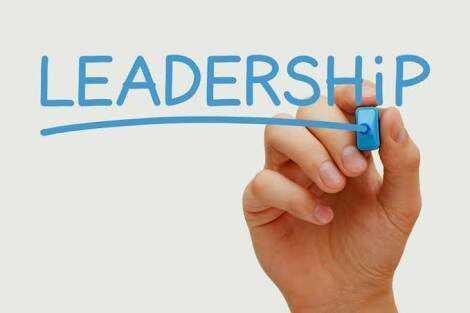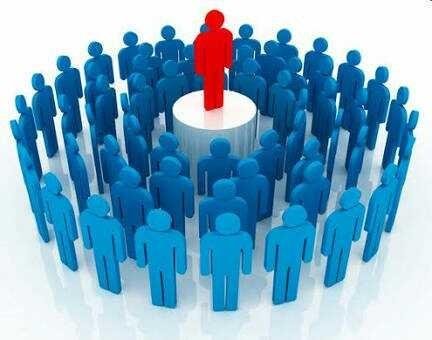Leadership

In this century of course we can record the history of humanity full of dynamics of change in this century including the development of science and technology, not least the development of knowledge about leadership paradigms that can include leadership styles, leadership typology, leadership models, and leadership theories. Although conceptually there are differences in three, but as an intermediate of the same substance there will be correlation and even interdependence between the three.

First we define what leadership is, Leadership is one's ability to influence and motivate others to do something according to common goals. Leadership involves influencing processes in determining organizational goals, motivating follower behavior to achieve goals, influencing to improve groups and culture.
As for some Types of Leadership are:
A. Authoritarian leadership style.
It is the style of the leader who focuses all the decisions and policies taken from himself in full. In this autocratic leadership style, the leader controls all aspects of the activity. Leaders tell what targets they want to achieve and how to achieve those goals, whether they are the main goals or the minor targets.
The leader also acts as a watchdog against all the activities of its members and the outsourcer when members experience problems. In other words, members do not have to worry about thinking about it. Members only do what the leaders decide. Leadership autocracy suitable for members who have low competence but high commitment.
B. Democratic leadership style Democratic
leadership style is a leader style that gives widespread authority to subordinates. Every problem always involves subordinates as a whole team. In a democratic leadership style the leader provides much information about the duties and responsibilities of his subordinates.
In the leadership of democracy, members have a greater role. In this leadership a leader shows only the goals to be achieved, on how to achieve that goal, the decisive member. In addition, members are also given the flexibility to solve problems faced. Democratic leadership is suitable for members who have high competence with varying commitments.
C. Free leadership style
This type of leader is involved only a small quantity of delam in which his subordinates actively determine the objectives and problem solving faced. Democratic leadership style free control is the most dynamic leadership model. In this leadership style a leader shows only the main goal to be achieved only. Each division or section is entrusted with the determination of minor targets, ways to achieve goals, and to solve the problems it faces on its own. Thus, leaders only act as monitors only.
Meanwhile, free control leadership is suitable for members who have competence and high commitment. Today, however, many experts offer leadership styles that can improve employee productivity, ranging from the most classic of character theory to situational theory.
Here are some Theories on Leadership.
Understanding leadership theories is very important to examine the extent to which leadership in an organization has been implemented effectively and support the productivity of the organization as a whole. In this paper will be discussed about the theory and style of leadership.
A leader must understand the theory of leadership so that later has a reference in running an organization. Some theories about leadership include:
A. Theory of Leadership of Nature (Trait Theory)
The scientific analysis of leadership departs from the centralization of the leader's own attention. The theory of nature first developed in Ancient Greece and Rome which assumed that the leader was born, not created that later this theory is known as "The Greatma Theory". In its development, this theory is influenced by the flow of behavior of psychological thinkers who hold that leadership traits are not wholly born but can also be achieved through education and experience. These traits include: physical, mental, and personality traits.
Keith Devis formulates 4 common traits that affect the success of organizational leadership, among others:
a. Intelligence
Based on the results of research, leaders who have high intelligence above the average intelligence of followers will have a higher chance of success as well. Because leaders in general have a higher level of intelligence than their followers.
b. Maturity and Extension of Social Relations
Generally in social interaction with the internal and external environment, a successful leader has a mature and stable emotion. This makes the leader is not easily panicked and shaky in maintaining a position that is believed to be true.
c. Self Motivation and Achievement Encouragement
A successful leader generally has high self-motivation and a drive for achievement. This strong impetus is then reflected in optimal, effective and efficient performance.
d. Attitudes of Humanitarian Relations
The recognition of self-esteem and honor so that his followers are able to side with him.
B. Leadership Theory of Behavior and Situation
Based on the research, the behavior of a leader based on this theory has a tendency towards 2 things, namely:
First called the Consideration is a tendency of a leader who describes the close relationship with subordinates. Examples of symptoms that exist in this case such as: defending subordinates, giving input to subordinates and willing to consult with subordinates.
The second is called the Initiation Structure that is the tendency of a leader to give limits to subordinates. Examples that can be seen, subordinates received instructions in the execution of tasks, when, how the work is done, and the results to be achieved.
So, based on this theory, a good leader is how a leader who has a high attention to subordinates and to high results as well.
C. Authoritative Theory Leader
Authority is an important factor in the life of leadership, because with that factor a leader will be able to influence the behavior of others both individually and in groups so that the person is willing to do what the leader wants.
D. Situation Leadership Theory
A leader must be a good diagnostic and should be flexible, in accordance with the development and maturity level of subordinates.
E. Group Theory
For the purpose of group (organization) can be achieved, there must be a positive exchange between the leader and his followers.
For those of you who are especially working on papers on leadership, the article above can be used as reference of the paper. If you think the above article is incomplete, here Duniabaca.com shares examples of papers on leadership in the form of Microsoft word files that you can get right now. In the example of this paper have described the background of the problem, the formulation of the problem and the purpose of writing and so forth until the conclusion or conclusion
this post is informative
really appreciate
keep sharing
Congratulations @putrasteem! You have completed some achievement on Steemit and have been rewarded with new badge(s) :
Click on any badge to view your own Board of Honor on SteemitBoard.
To support your work, I also upvoted your post!
For more information about SteemitBoard, click here
If you no longer want to receive notifications, reply to this comment with the word
STOP